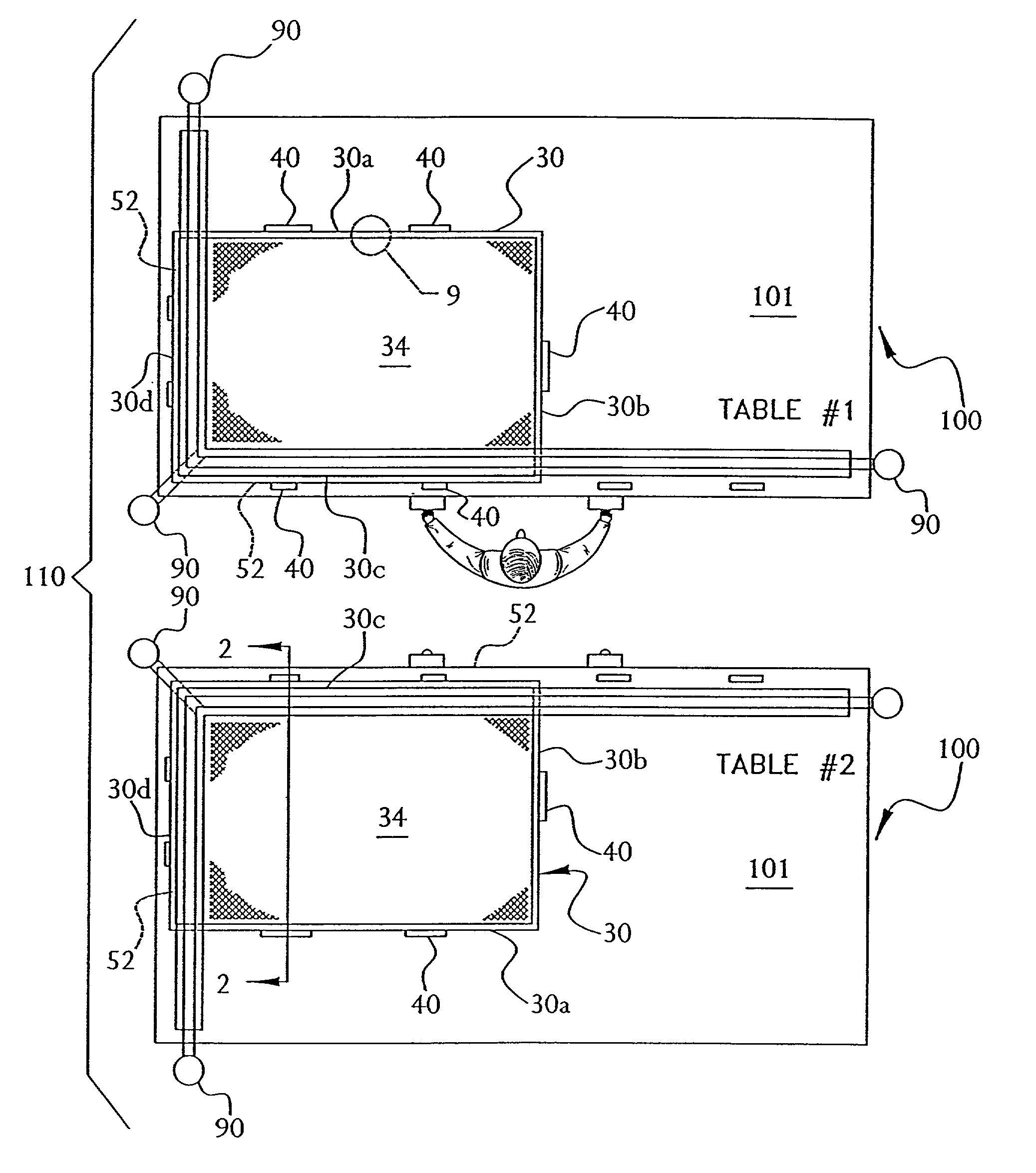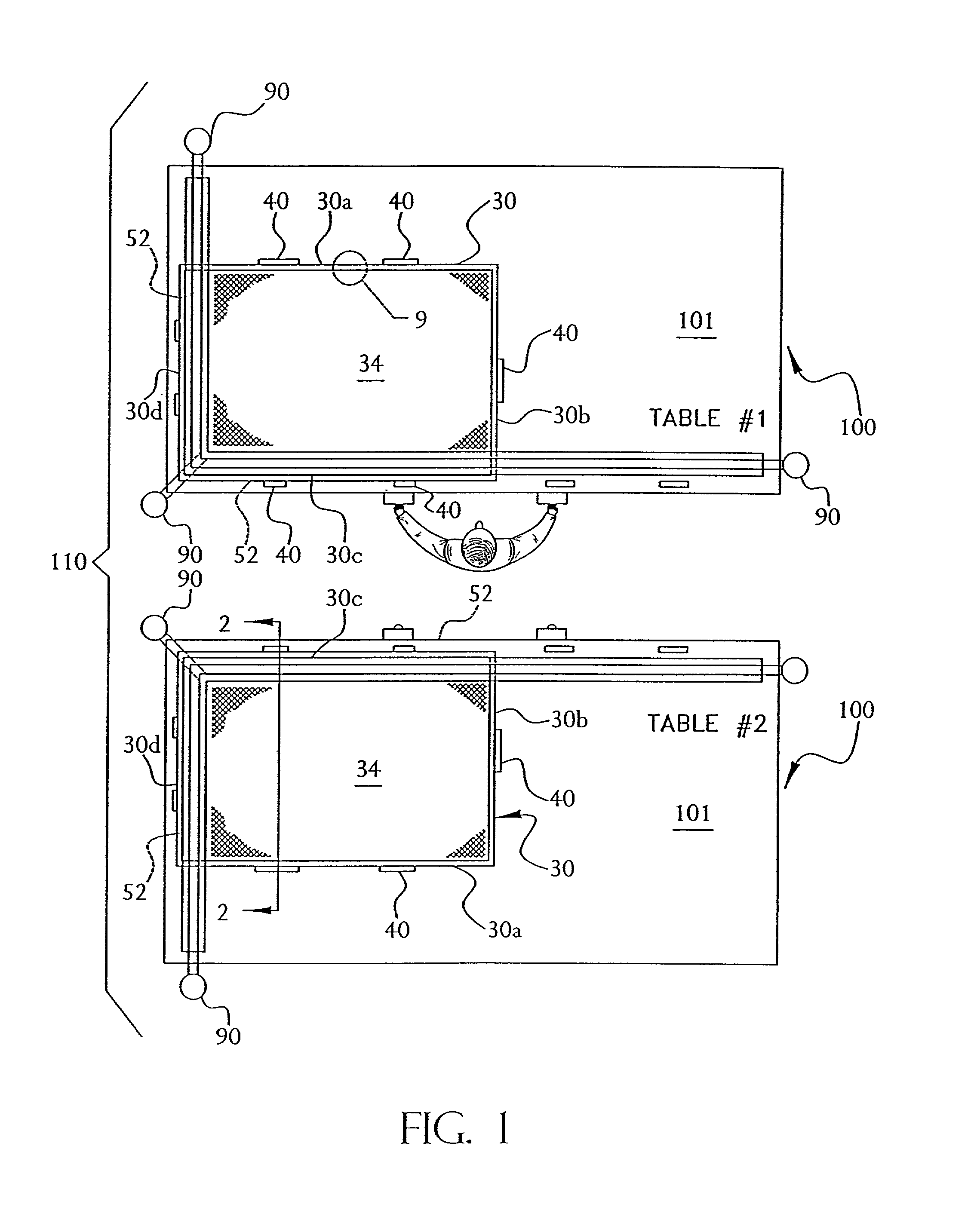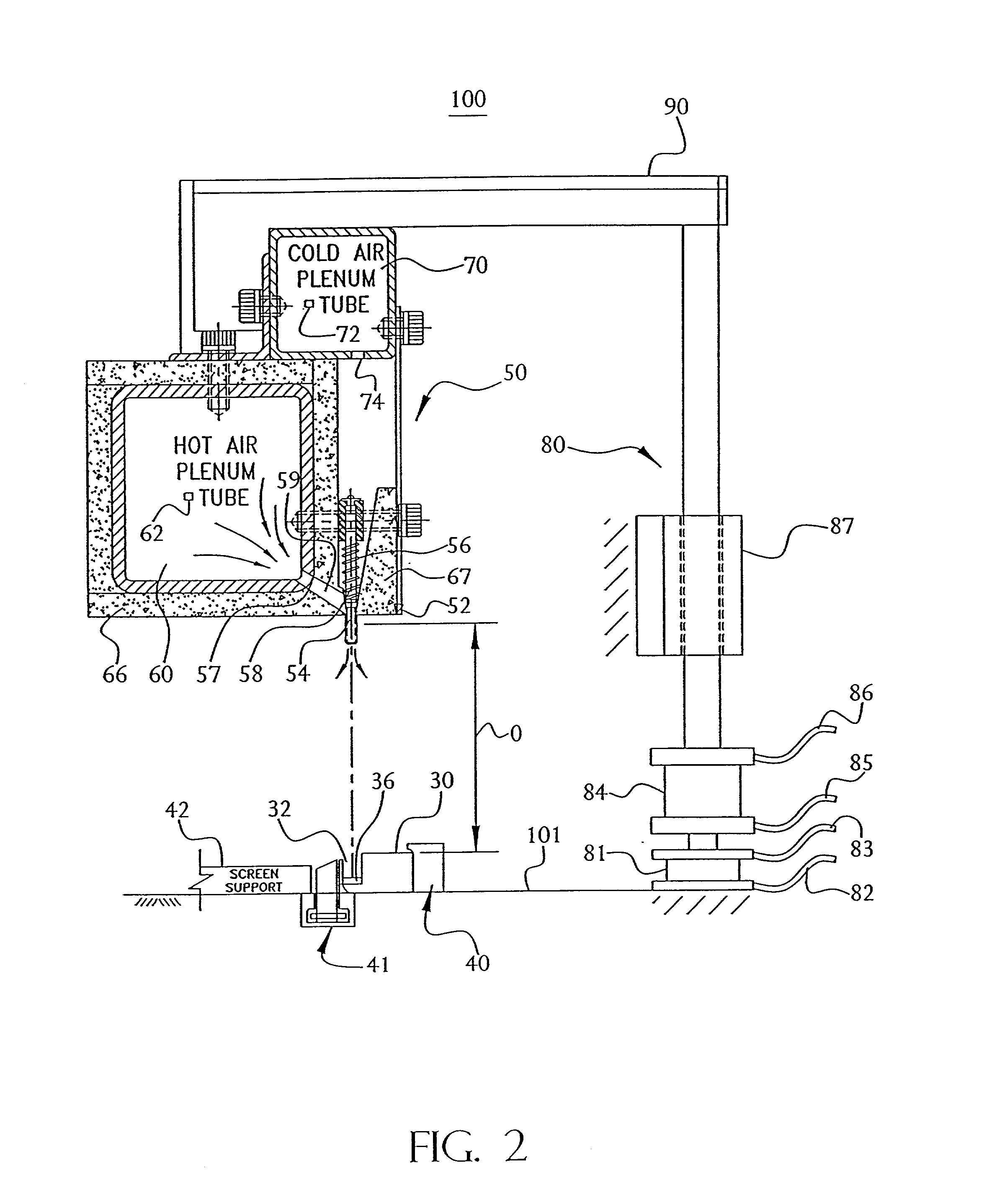Screen cloth insertion apparatus and method
a technology of screen cloth and insertion apparatus, which is applied in the direction of insect protection, door/window protective devices, bandages, etc., can solve the problems of screen bars deformation inwardly, not only aesthetically undesirable, but also prevent proper installation in the window opening
- Summary
- Abstract
- Description
- Claims
- Application Information
AI Technical Summary
Benefits of technology
Problems solved by technology
Method used
Image
Examples
Embodiment Construction
[0083]PCT International Application No. PCT / IB00 / 01716, filed Aug. 23, 2000, U.S. patent application Ser. No. 09 / 379,102 filed Aug. 23, 1999, and U.S. patent application Ser. No. 08 / 997,737 filed Dec. 24, 1997 are all expressly incorporated by reference herein in their entireties.
[0084]The invention includes a method and apparatus for securing a screen 34 to a frame 30, or to a screen bar segment 30a of the frame 30. The invention also includes a frame and screen assembly formed by the method, and a screen bar stock used in the assembly.
[0085]As shown in FIG. 1, the exemplary frame 30 includes a plurality of screen bar segments 30a–30d. Each screen bar segment 30a–30d has a mounting surface 32a which may be a bottom of a groove or tensioning step 32 or 32′ (best seen in FIGS. 6–11) on a face of the frame 30. The frame 30 may have a flat face, and the mounting surface may be a portion of the flat surface (not shown), but a groove 32 or tensioning step 32′ is preferred, because it enh...
PUM
| Property | Measurement | Unit |
|---|---|---|
| length | aaaaa | aaaaa |
| length | aaaaa | aaaaa |
| width | aaaaa | aaaaa |
Abstract
Description
Claims
Application Information
 Login to View More
Login to View More - R&D
- Intellectual Property
- Life Sciences
- Materials
- Tech Scout
- Unparalleled Data Quality
- Higher Quality Content
- 60% Fewer Hallucinations
Browse by: Latest US Patents, China's latest patents, Technical Efficacy Thesaurus, Application Domain, Technology Topic, Popular Technical Reports.
© 2025 PatSnap. All rights reserved.Legal|Privacy policy|Modern Slavery Act Transparency Statement|Sitemap|About US| Contact US: help@patsnap.com



